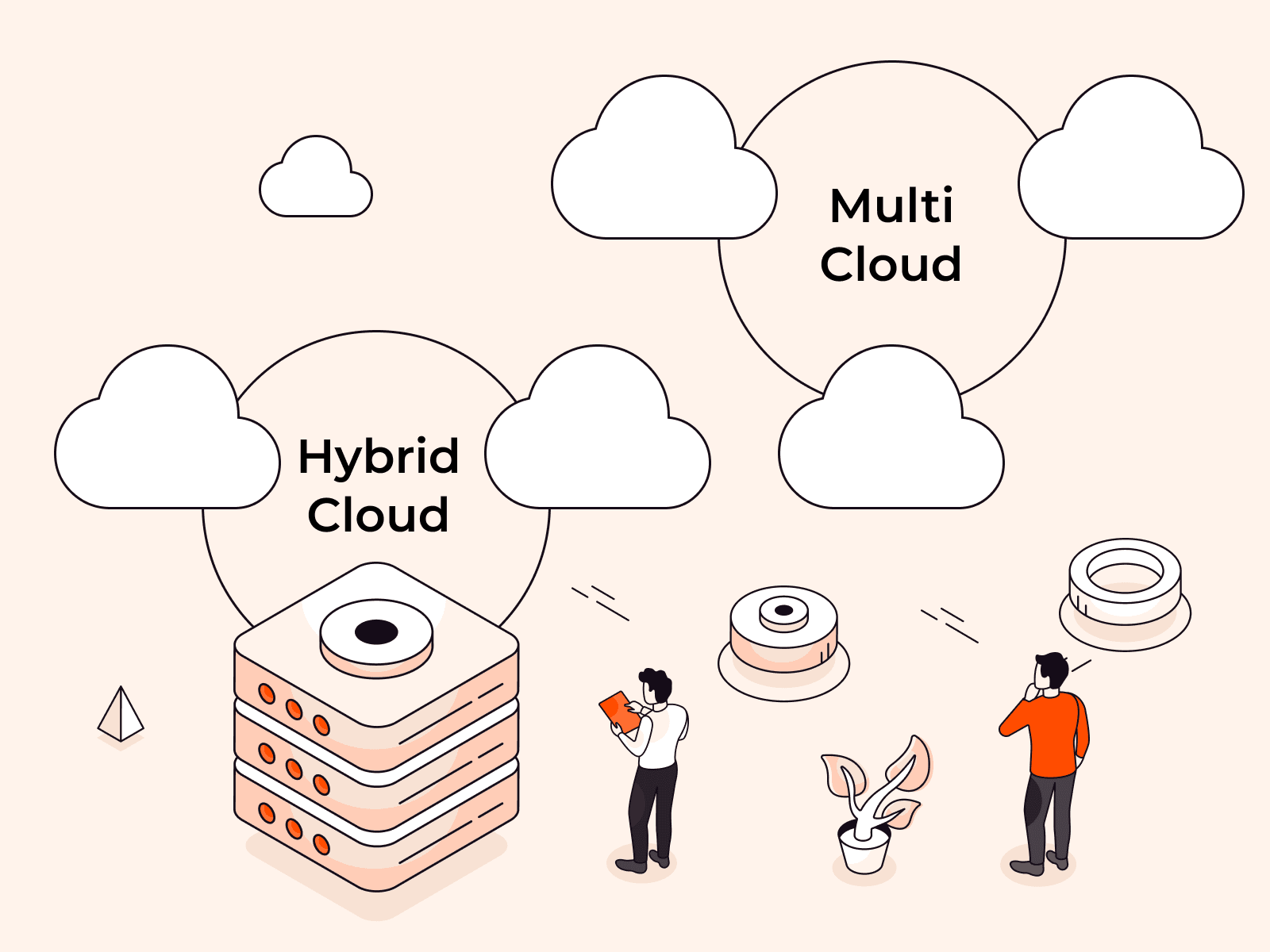This article explores how we can reverse engineer Docker images by examining the internals of how Docker images store data, how to use tools to examine the different aspects of the image, and how we can create tools like Dedockify to leverage the Python Docker API to create Dockerfiles from source images.
Introduction
As public Docker registries like Docker Hub and TreeScale increase in popularity, except for the most restrictive environments, it has become common for admins and developers to casually download an image built by an unknown entity. It often comes down to the convivence outweighing the perceived risk. When a Docker image is made publicly available, the Dockerfile is sometimes also provided, either directly in the listing, in a git repository, or through an associated link, but sometimes this is not the case. Even if the Dockerfile was made available, we don’t have many assurances that the published image is safe to use.
Maybe security vulnerabilities aren’t your concern. Perhaps one of your favorite images is no longer being maintained, and you would like to update it so that it runs on the latest version of Ubuntu. Or perhaps a compiler for another distribution has an exclusive feature that makes it better optimized to produce binaries during compile time, and you have an uncontrollable compulsion to release a similar image that’s just a little more optimized.
Whatever the reason, if you wish to recover a Dockerfile from an image, there are options. Docker images aren’t a black box. Often, you can retrieve most of the information you need to reconstruct a Dockerfile. In this article, we will explore exactly how to do that by looking inside a Docker image so that we can very closely reconstruct the Dockerfile that built it.
In this article, we will show how it’s possible to reconstruct a Dockerfile from an image using two tools, Dedockify, a customized Python script provided for this article, and dive. The basic process flow used will be as follows.

Using dive

To get some quick, minimal-effort intuition regarding how images are composed, we will introduce ourselves to various advanced and potentially unfamiliar Docker concepts using Dive. Dive is an image exploration tool that allows examination of each layer of a Docker image.
First, let us create a simple, easy to follow Dockerfile that we can explore for testing purposes.
In an empty directory, enter the following snippet directly into the command line:
cat > Dockerfile << EOF ; touch testfile1 testfile2 testfile3FROM scratchCOPY testfile1 /COPY testfile2 /COPY testfile3 /EOFBy entering the above and pressing enter, we’ve just created a new Dockerfile and populated three zero-byte test files in the same directory.
$ lsDockerfile testfile1 testfile2 testfile3So now, lets build an image using this Dockerfile and tag it as example1.
docker build . -t example1Building the example1 image should produce the following output:
Sending build context to Docker daemon 3.584kBStep 1/4 : FROM scratch --->Step 2/4 : COPY testfile1 / ---> a9cc49948e40Step 3/4 : COPY testfile2 / ---> 84acff3a5554Step 4/4 : COPY testfile3 / ---> 374e0127c1bcSuccessfully built 374e0127c1bcSuccessfully tagged example1:latestThe following zero-byte example1 image should now be available:
$ docker imagesREPOSITORY TAG IMAGE ID CREATED SIZEexample1 latest 374e0127c1bc 31 seconds ago 0BNote that since there’s no binary data, this image won’t be functional. We are only using it as a simplified example of how layers can be viewed in Docker images.
We can see here by the size of the image that there is no source image. Instead of a source image, we used scratch which instructed Docker to use a zero-byte blank image as the source image. We then modified the blank image by copying three additional zero-byte test files onto it, and then tagged the changes as example1.
Now, let us explore our new image with Dive.
docker run --rm -it \ -v /var/run/docker.sock:/var/run/docker.sock \ wagoodman/dive:latest example1Executing the above command should automatically pull wagoodman/dive from Docker Hub, and produce the output of Dive’s polished interface.
Unable to find image 'wagoodman/dive:latest' locallylatest: Pulling from wagoodman/dive89d9c30c1d48: Pull complete5ac8ae86f99b: Pull completef10575f61141: Pull completeDigest: sha256:2d3be9e9362ecdcb04bf3afdd402a785b877e3bcca3d2fc6e10a83d99ce0955fStatus: Downloaded newer image for wagoodman/dive:latestImage Source: docker://example-imageFetching image... (this can take a while for large images)Analyzing image...Building cache...
Scroll through the three layers of the image in the list to find the three files in the tree displayed on the right.

We can see the contents on the right change as we scroll through each layer. As each file was copied to a blank Docker scratch image, it was recorded as a new layer.

Notice also that we can see the commands that were used to produced each layer. We can also see the hash value of the source file and the file that was updated.
If we take note of the items in the Command: section, we should see the following:
#(nop) COPY file:e3c862873fa89cbf2870e2afb7f411d5367d37a4aea01f2620f7314d3370edcc in /#(nop) COPY file:2a949ad55eee33f6191c82c4554fe83e069d84e9d9d8802f5584c34e79e5622c in /#(nop) COPY file:aa717ff85b39d3ed034eed42bc1186230cfca081010d9dde956468decdf8bf20 in /Each command provides solid insight into the original command used in the Dockerfile to produce the image. However, the original filename is lost. It appears that the only way to recover this information is to make observations about the changes to the target filesystem, or perhaps to infer based on other details. More on this later.
docker history
Aside from third-party tools like dive, the tool we have immediately available is docker history. If we use the docker history command on our example1 image, we can view the entries we used in the Dockerfile to create that image.
docker history example1We should, therefore, get the following result:
IMAGE CREATED CREATED BY SIZE COMMENT374e0127c1bc 25 minutes ago /bin/sh -c #(nop) COPY file:aa717ff85b39d3ed… 0B84acff3a5554 25 minutes ago /bin/sh -c #(nop) COPY file:2a949ad55eee33f6… 0Ba9cc49948e40 25 minutes ago /bin/sh -c #(nop) COPY file:e3c862873fa89cbf… 0BNotice that everything in the CREATED BY column is truncated. These are Dockerfile directives passed through Bourne shell. This information could be useful for recreating our Dockerfile, and although it is truncated here, we can view all of it by also using the --no-trunc option:
$ docker history example1 --no-truncIMAGE CREATED CREATED BY SIZE COMMENTsha256:374e0127c1bc51bca9330c01a9956be163850162f3c9f3be0340bb142bc57d81 29 minutes ago /bin/sh -c #(nop) COPY file:aa717ff85b39d3ed034eed42bc1186230cfca081010d9dde956468decdf8bf20 in / 0Bsha256:84acff3a5554aea9a3a98549286347dd466d46db6aa7c2e13bb77f0012490cef 29 minutes ago /bin/sh -c #(nop) COPY file:2a949ad55eee33f6191c82c4554fe83e069d84e9d9d8802f5584c34e79e5622c in / 0Bsha256:a9cc49948e40d15166b06dab42ea0e388f9905dfdddee7092f9f291d481467fc 29 minutes ago /bin/sh -c #(nop) COPY file:e3c862873fa89cbf2870e2afb7f411d5367d37a4aea01f2620f7314d3370edcc in / 0BWhile this has some useful data, it could be a challenge to parse from the command line. We could also use docker inspect. However, in this article, we will focus on using the Docker Engine API for Python.
Using Docker Engine API for Python
Docker released a Python library for the Docker Engine API, which allows full control of Docker from within Python. In the following example, we can recover similar information we did using docker history by running the following Python 3 code:
#!/usr/bin/python3import dockercli = docker.APIClient(base_url='unix://var/run/docker.sock')print (cli.history('example1'))This should result in output much like the following:
[{'Comment': '', 'Created': 1583008507, 'CreatedBy': '/bin/sh -c #(nop) COPY file:aa717ff85b39d3ed034eed42bc1186230cfca081010d9dde956468decdf8bf20 in / ', 'Id': 'sha256:374e0127c1bc51bca9330c01a9956be163850162f3c9f3be0340bb142bc57d81', 'Size': 0, 'Tags': ['example:latest']}, {'Comment': '', 'Created': 1583008507, 'CreatedBy': '/bin/sh -c #(nop) COPY file:2a949ad55eee33f6191c82c4554fe83e069d84e9d9d8802f5584c34e79e5622c in / ', 'Id': 'sha256:84acff3a5554aea9a3a98549286347dd466d46db6aa7c2e13bb77f0012490cef', 'Size': 0, 'Tags': None}, {'Comment': '', 'Created': 1583008507, 'CreatedBy': '/bin/sh -c #(nop) COPY file:e3c862873fa89cbf2870e2afb7f411d5367d37a4aea01f2620f7314d3370edcc in / ', 'Id': 'sha256:a9cc49948e40d15166b06dab42ea0e388f9905dfdddee7092f9f291d481467fc', 'Size': 0, 'Tags': None}]Looking at the output, we can see that reconstructing much of the Dockerfile is just a matter of parsing all the relevant data and reversing the entries. But as we saw earlier, we also notice that there are a few hashed entries in the COPY directives. As previously mentioned, the hashed entries here represent filenames used from outside the layer. This information isn’t directly recoverable. However, just as we saw in dive, we can infer these names when we search for changes made to the layer. It’s also sometimes possible to infer in cases where the original copy directive included the target filename as the destination. In other cases, the filenames may not be critical, allowing us to use arbitrary filenames. And still in other cases, while more difficult to assess, we can infer filenames that are back-referenced elsewhere in the system, such as in supporting dependencies like scripts or configuration files. But in any case, searching for all changes between layers is the most reliable.

Dedockify
Let’s take this a few steps further. In order to help reverse engineer this image into a Dockerfile, we will need to parse everything and reformat it into a form that is readable. Please note that for the purposes of this article, the following Python 3 code has been made available and can be obtained from the Dedockify repository on GitHub. Thanks goes to LanikSJ for all prior work.
from sys import argvimport dockerclass ImageNotFound(Exception): passclass MainObj: def __init__(self): super(MainObj, self).__init__() self.commands = [] self.cli = docker.APIClient(base_url='unix://var/run/docker.sock') self._get_image(argv[-1]) self.hist = self.cli.history(self.img['RepoTags'][0]) self._parse_history() self.commands.reverse() self._print_commands() def _print_commands(self): for i in self.commands: print(i) def _get_image(self, img_hash): images = self.cli.images() for i in images: if img_hash in i['Id']: self.img = i return raise ImageNotFound("Image {} not found\n".format(img_hash)) def _insert_step(self, step): if "#(nop)" in step: to_add = step.split("#(nop) ")[1] else: to_add = ("RUN {}".format(step)) to_add = to_add.replace("&&", "\\\n &&") self.commands.append(to_add.strip(' ')) def _parse_history(self, rec=False): first_tag = False actual_tag = False for i in self.hist: if i['Tags']: actual_tag = i['Tags'][0] if first_tag and not rec: break first_tag = True self._insert_step(i['CreatedBy']) if not rec: self.commands.append("FROM {}".format(actual_tag))__main__ = MainObj()Initial Dockerfile Generation
If you’ve made it this far, then you should have two images: wagoodman/dive and our custom example1 image.
$ docker imagesREPOSITORY TAG IMAGE ID CREATED SIZEexample1 latest 374e0127c1bc 42 minutes ago 0Bwagoodman/dive latest 4d9ce0be7689 2 weeks ago 83.6MBRunning this code against our example1 image will finally produce the following:
$ python3 dedockify.py 374e0127c1bcFROM example1:latestCOPY file:e3c862873fa89cbf2870e2afb7f411d5367d37a4aea01f2620f7314d3370edcc in /COPY file:2a949ad55eee33f6191c82c4554fe83e069d84e9d9d8802f5584c34e79e5622c in /COPY file:aa717ff85b39d3ed034eed42bc1186230cfca081010d9dde956468decdf8bf20 in /We’ve extracted nearly the same information that we observed when we explored the image with dive earlier. Notice the FROM directive shows us example1:latest instead of scratch. Our code is making an assumption about the base image that is technically incorrect in this case.
As a comparison, let us do the same thing with our wagoodman/dive image.
$ python3 dedockify.py 4d9ce0be7689FROM wagoodman/dive:latestADD file:fe1f09249227e2da2089afb4d07e16cbf832eeb804120074acd2b8192876cd28 in /CMD ["/bin/sh"]ARG DOCKER_CLI_VERSION=RUN |1 DOCKER_CLI_VERSION=19.03.1 /bin/sh -c wget -O- https://download.docker.com/linux/static/stable/x86_64/docker-${DOCKER_CLI_VERSION}.tgz | tar -xzf - docker/docker --strip-component=1 \ && mv docker /usr/local/binCOPY file:8385774b036879eb290175cc42a388877142f8abf1342382c4d0496b6a659034 in /usr/local/bin/ENTRYPOINT ["/usr/local/bin/dive"]This shows a lot more diversity compared to our example1 image. We notice the ADD directive just before the FROM directive. Our code is making the wrong assumption again. We don’t know what the ADD directive is adding. We can intuitively make the assumption, however, that we don’t know for sure what the base image is. The ADD directive could have been used to extract a local tar file into the root directory. It’s possible that it was using this method to load another base image.
Dedockify Limitation Testing
Let’s experiment by creating an example Dockerfile where we explicitly define the base image. As we did earlier, in an empty directory, run the following snippet directly from the command line.
cat > Dockerfile << EOF ; touch testfile1 testfile2 testfile3FROM ubuntu:latestRUN mkdir testdir1COPY testfile1 /testdir1RUN mkdir testdir2COPY testfile2 /testdir2RUN mkdir testdir3COPY testfile3 /testdir3EOFNow, perform a build that tags our new image as example2. This will create a similar image as before, except instead of using scratch it will use ubuntu:latest as the base image.
$ docker build . -t example2Sending build context to Docker daemon 3.584kBStep 1/7 : FROM ubuntu:latest ---> 72300a873c2cStep 2/7 : RUN mkdir testdir1 ---> Using cache ---> 4110037ae26dStep 3/7 : COPY testfile1 /testdir1 ---> Using cache ---> e4adf6dc5677Step 4/7 : RUN mkdir testdir2 ---> Using cache ---> 22d301b39a57Step 5/7 : COPY testfile2 /testdir2 ---> Using cache ---> f60e5f378e13Step 6/7 : RUN mkdir testdir3 ---> Using cache ---> cec486378382Step 7/7 : COPY testfile3 /testdir3 ---> Using cache ---> 05651f084d67Successfully built 05651f084d67Successfully tagged example2:latestSince we now have a slightly more complex Dockerfile to reconstruct, and we have the exact Dockerfile we used to generate this image, we can make a comparison. Let us generate the output from our Python script.
$ docker imagesREPOSITORY TAG IMAGE ID CREATED SIZEexample2 latest 05651f084d67 2 minutes ago 64.2MBexample1 latest 374e0127c1bc 1 hour ago 0Bubuntu latest 72300a873c2c 9 days ago 64.2MBwagoodman/dive latest 4d9ce0be7689 3 weeks ago 83.6MB$ python3 dedockify.py 05651f084d67FROM ubuntu:latestRUN /bin/sh -c mkdir testdir1COPY file:cc4f6e89a1bc3e3c361a1c6de5acc64d3bac297f0b99aa75af737981a19bc9d6 in /testdir1RUN /bin/sh -c mkdir testdir2COPY file:a04cdcdf5fd077a994fe5427a04f6b9a52288af02dad44bb1f8025ecf209b339 in /testdir2RUN /bin/sh -c mkdir testdir3COPY file:2ed8ccde7cd97bc95ca15f0ec24ec447484a8761fa901df6032742e8f1a2a191 in /testdir3This correlates well with the original Dockerfile. There’s no ADD directive this time, and the FROM directive is correct. Provided that our base image is defined in the original Dockerfile, and it avoids using scratch or avoids using the ADD directive to create a base image from a tar file, we should be able to reconstruct the Dockerfile with some accuracy. We still don’t know the names of the original files that were copied, however.
Blind Freestyle Dockerfile Reconstruction
Now, let us try reverse engineering a Docker container the proper way using the tools that we’ve already discussed. The container we will use has been modified from the above examples. Our earlier Dockerfile has been modified to create example3. The image has been made functional by adding a small binary. The assembly source code is available here in the Dedockify GitHub repository. Since this image is so small, we won’t need to build or pull it. We can just copy and paste the entire container right into our Docker environment with the snippet below.
uudecode << EOF | zcat | docker loadbegin-base64 600 -H4sICMicXV4AA2V4YW1wbGUzLnRhcgDtXVtvG8cVVnp56UN/QJ/YDQokgETNzJkrgTykjgsbDSzDURMkshDM5YzFhiJVkkpiCELzH/pP+tYfkf/UsxRNXdxIspe7lqv5IJF7PTM7Z87MmY9nZxgL2qG1DkN2nkXmtTecQwYrMMfsBHgXgFuVeXLCI5c26sxdNHQsie2Nm8GYZEYp+l7g6vdim4MWBrgyBjaY4MbIjZ66hezGOJ7N/ZSyMp1M5tddd9P5qw/3noA11f+XD5998XjnybVpcMa0lNfoH67oHxiIjV4nhXjP9c/7701WC1pAY/v/+2wyvimNG+zfgLpi/0KbYv+d4KQapmpQNa0G1WZ15Kc4npMsr7JUjGGMyLUzPEXJc1RCWqFkTtoEL5TgEaLSKlmOiXHnUSlKjYsQSFacop9jnTHuDNtinP52GRss/r6pL5iM5344xum3tJWHL6rBSfVoMpuP/SHSXXTFZ5NDuuB8/28znJ5tfTqf+3jwxTwNx9Ug+9EMLxybHM9fP4jT6erg7vzlanvnCMeX5Sz2dsYRV0cejr+vBuPj0WizenCYXm0+PvQvlhn7cjI6PsTZqzNfTabfDccvPhsuc/twPJ++PJoM66I9u2Jn/Ofj4Wgl6nMfcLS8/XSzmtBmNRqOj3+sTm+h/8b2P/IvcdqvbeiX07je/uXr/h9oZor9dwF/dHQbF74R3sz/F1RfuKbLi//fAWr993846C/+J0f/aCONRR9/g/4vbXNQShb7LygoKGgTTDkP1tiEUvkgJajgnTZRA0pAplFqZ1m02hqXjc4+aaVTztx4pzywfvPxH7X1V/0/oZgu7X8XOKn8NB4M5xjnx9N6ROIPk5ZnI6y7P67aq55+uvvok+3j2XR7NIl+tD0Lw/Hgwv5q9/zEYuNslz6q/f85MJsd0CBVD4SHEDhGkM4LDIqHQN4JjU5s5NqiJguRAr3nKpgICoRhyLNiCgHQOLxhfLdN7teVMd7e4uD2AY5Gkzpv14/2VuPgegyvDA3aOATr5cJkJUs0tMsRacytE6MsGZnp/piCEMaiijHmJJOIihvNbh5WX0zh/7kqkA5od3t2QI+yFenjw4/Gk6OPe7Wqnuw++/rpzuMnu7295xdU9bzar29/X6rPyenpRZZFMMG2GGwxsStgoPhAQF8KrZ1grqZb0iR+R5Xie5zOhpPxgpbpM+hrOnUwnM0nU1LY3sm1AnnfOXCgDDPfnDM834aX9XOclXZvK/aWJf3VzrO/fvb4WW97jjPS95RXp5vXyxd9Qd0MSCnsLeQ/2Hn6dS8PRzgAIbLLTiBEJ9Ej8hRZEmCURW6CcTaD8+h18BhtdsrJIFDGmBigS6w3HPfqTNbCeO8W2SQjVBK4lW9RDOIW8hUZv+PG8XdWDOI2xWA4mYGkKvYWxQC3kO+YdMYxod5ZMcDNxQB9Zpkg38iJNymG2uxvFi005+RJwRsVQAAIkmURmaF+gwUXvAZjApistWaSJyWFoAaKOS1DFJrKR0omQSSNVvO6ABaNz20e/mITc0MOe9c1vJsVHh7NX3674CKrwXx6jKf7l6jQzar233Ld8lXzl0d1E724eFY3bsOcvx2mWd14LtttriUXQXJAZFJn5MLriMHJTA6yT44zHZjHQJ2qZM5watCpBeeevFdMdANJXUkC7ZMxjCq7TI6cbW+zUkEpqj/RMrBeWInCUuFqj3QZTxays9RrBNT+XBJDh2QwwQkfqXcAqjZK5RA5SNIJzywKSTKTMGiYjkoknwJjzgVg1vBwLilYbbwhFzszLYTTwqNgRiMEZhMYK7zztZ9gmHUZap8/0WOROCXRenUhT1Q8IlhltBbOihhRZhOtoucgwVRolD3DkqprS6bHZzlbmxMNOBJGRYVxLsmDcSGZJBkTjkdlEtW3IKj4nA0oUJHDYgP5MZQ3qjHKZCrDqJSylvwZhAtPF5PRMfJEt4I0kjvms/QqU4VVnp6O6jD3PJpaujKcLqJqaNF5TlrR5lxS5jQ2IfVRv22MAhbInjAaiNIpzkSGCAacVmAj0IPWDVoKPFCjQMXi0VX7p7eh4N8phI70kElxeg7vhJIKZYpaqOy9J9Vpck3Qkx2I2qOMIUrSQ46GKrzkqHRb8R+cF/63CzTWfyvxH8LI8vtPJyjxH/cbje1/DfEfWvDX4j8YL/bfBZbxH02rQYnZ6DBmY51obP/txH8oUX7/7QSv+LU2g0DezP/nVF+EBij+fxdY6b/FIJC6PN4s/kOqWv/F/gsKCgrag2JgEIxFl3RyIWQB2bjkDIiYFeTIUuLJy6SNNUG4wKPl3GeXEgSfWuL/BNTxv6X/bx+N9d/O+18gVen/u0Dh/+43Gtt/K+9/gWDF/jvBkv9rWg0uvf/lBSZQEqIiYUoB50E7iU4JFD4ESbcok5Kq6SWbIWjFpbFSCOmUYaxwiR1yiY3tvxX+T3JR3v/sBK8Cy+4O/yfO+L/y/lcnWOn/rvF/hf8vKCgoaBXGQgwYvEKWwNmY0euoAs/cks/mFGMgBI+BfD7jaJtrHaMnhx1ZMAF9a/M/6dL/d4HG+m9r/qfS/3eCwv/dbzS2/7bmfyr23wmW/F/TanCR/7PKBZAyeI7SuGDqd0Y9ahVYZj6nJFFqpZS2UieBDAC05HRxNBKE06nwfx3yf43tv6X5n3iJ/+0Er96ovHP8X/H/O8FK/3eN/yu//xUUFBS0iqbOekv8nzSs9P9doLH+23n/V4ky/1cnKPzf/UZj+2+H/wNd7L8TLPm/NXB2K/5vDbGEhf/riv9rbP/t8H/Ayvt/naDE/xX9L/S/mrxv/Wnc7P9f1P+C/5OyxP8WFBQUtIqmizW1Ff9X+v9u0Fj/Lc3/Z4r/3wkK/3e/0dj+W4r/K/P/dIMl/7eGNRtX/N8aYgkL/9cV/9fY/lua/0+xYv9doMT/Ff0v9L9atWL9abwV/1fi/wsKCgpaRdPJetqK/6vX/y39f/torP+W4v94+f2vExT+736jsf23FP+niv13glf8X/M5+1b8X1lL5H3i/5rafzv8n9Bl/a9OcPfW/1jyf8X/7wQr/a/WMF5/Gm/F/xX+v6CgoKBVJPK8tUkQIUjIXCXMBoJj0oPO3BtujJc86SyRWaFFDOhQ8QxKJ8uya2n9D6bK+h+doLH+25n/j/My/0cnKPzf/UZj+2/O/wmQr63/a0r8TzdY8n9Nq8FF/o+xoB1a6zBk51lkXpMADhmswByzE+BdAG5V5skJj1zaSKm4aOhYEpf4P8EE22KwxcSugIHiAwF9KbR2grlLRGCdsKrfXuUQrJe25hYlS5SRHDFpoxNDACOzDxhToCpmUcUYc5JJRMWNZjfzihdTuGsc41719NPdR59sH8+m26NJ9KPtWRiOBxf2V7vnJxYbZ7v0Ue0vScq9qt7dnh3Qo2xF+vjwo/Hk6ONezUc+2X329dOdx092e3vPq21/dLR9gKPR5Hm1X9/+iticHXih9EB4CIFjBOm8wKB4CIxMnRkbubaokRoGgd5zFUwEBcIw5FkxRbpC4/AGfrRO/gpHunchT3WGfoEtPTk93azSJH5Hqv4ep7PhZLxgm/sM+vqsItx9WnmdKr/MS9919S3Jbj+NB8M5xvnxtM61P0y6tst3uJ72+4bG/X9z/l+9Pv4DXd7/6Qa1sbWdxhuP/znXqsT/doJVY9tiGrX9X6t/Y67w/9SPlPF/J/jnw8//8sFq78Fvf7Xx640/0Hf9/xs68h9OG//+/c8//am38cHGv37+6VFdWTZ7P0ymo/TH3727jBcUFBQUNMKhHw8zzub9W/B4b4sb/H8O0lzyBemIEuX9n06wd1I9WFIdFVPOgzU2oVQ+SAkqeKdN1IASaKiPUrsFr2aNy0Znn8hNTzlz453ywBZ1iIbfz/BosutfzOrRPP7oD49GCIORryNM6iH95/WIcXGyaaTg+eCTUl1fJBsJW9+yuCRsfXPskbD1LdhRl9na3v4lYU1530vC1sdLVPun+8VP/SVMyVZnw/lkOsRZW2nc9PsvB7ja/pNBlPa/C5ysWuia61420mv4Pej0tNhcQUFBwV3GfwHMszUXAMIAAA======EOFRunning everything directly from the command line will load example3:latest. Now, let us try to recreate the Dockerfile.
$ docker imagesREPOSITORY TAG IMAGE ID CREATED SIZEexample3 latest 059a3878de45 5 minutes ago 63B$ python3 dedockify.py 059a3878de45FROM example3:latestWORKDIR /testdir1COPY file:322f9f92e3c94eaee1dc0d23758e17b798f39aea6baec8f9594b2e4ccd03e9d0 in testfile1WORKDIR /testdir2COPY file:322f9f92e3c94eaee1dc0d23758e17b798f39aea6baec8f9594b2e4ccd03e9d0 in testfile2WORKDIR /testdir3COPY file:322f9f92e3c94eaee1dc0d23758e17b798f39aea6baec8f9594b2e4ccd03e9d0 in testfile3WORKDIR /appCOPY file:b33b40f2c07ced0b9ba6377b37f666041d542205e0964bc26dc0440432d6e861 in helloENTRYPOINT ["/app/hello"]This gives us a base Dockerfile to work from. Since example3:latest is the name of this image, we can assume from the context that it’s using scratch. Now, we need to see what files were copied into /testdir1, /testdir2, /testdir3, and /app. Let us run this image against dive to see how we will recover the missing data.
docker run --rm -it \ -v /var/run/docker.sock:/var/run/docker.sock \ wagoodman/dive:latest example3:latest
If you scroll down to the last layer, you’ll be able to see all of the missing data populate the tree on the right. Each of the directories had zero-byte files named testfile1, testfile2, and testfile3 copied to it. And in the last later, a 63-byte file was copied called hello to the /app directory.
Now, let us recover those files! There doesn’t appear to be a way to copy the files directly from the image, so we will need to create a container first.
$ docker run -td example3:latest6fdca182a128df7a76e618931c85a67e14a73adc69ad23782bc9a5dc29420a27Now, let us copy the files we need from the container to the host using the path and filenames we recovered from Dive below.
/testdir1/testfile1/testdir2/testfile2/testdir3/testfile3/app/helloWe might first check to see if our container is still running.
$ docker psCONTAINER ID IMAGE COMMAND CREATED STATUS PORTS NAMES6fdca182a128 example3:latest "/app/hello" 2 minutes ago Up 2 minutes wizardly_lamportIf a container isn’t running for some reason, that’s fine. We can verify its status to see that it’s stopped.
$ docker container ls -aWe can also check the logs.
$ docker logs 6fdca182a128Hello, world!It appears to be running a persistent Hello, world! program. Actually, in this case, the Hello, world! program wasn’t designed to be persistent. In Docker version 19.03.6, there may be a bug that’s preventing the application from terminating normally. This is acceptable for now. The container can be active or stopped; the application doesn’t need to be persistent to recover any of the data we need. A container in any state only needs to be generated from the source image for which we are extracting data.
docker cp 6fdca182a128:/testdir1/testfile1 .docker cp 6fdca182a128:/testdir2/testfile2 .docker cp 6fdca182a128:/testdir3/testfile3 .docker cp 6fdca182a128:/app/hello .By running the recovered executable to verify its behavior, we should see the following:
$ ./helloHello, world!With the Dockerfile we generated earlier, we can update it to include all the new details. This includes updating the FROM directive to scratch, along with all of the discovered filenames we found while exploring with Dive.
FROM scratchWORKDIR /testdir1COPY testfile1 .WORKDIR /testdir2COPY testfile2 .WORKDIR /testdir3COPY testfile3 .WORKDIR /appCOPY hello .ENTRYPOINT ["/app/hello"]Again, combining all files in a shared folder, we’re ready to run our reverse engineered Dockerfile.
$ docker build . -t example3:recoveredSending build context to Docker daemon 4.608kBStep 1/10 : FROM scratch --->Step 2/10 : WORKDIR /testdir1 ---> Running in 5e8e47505ca6Removing intermediate container 5e8e47505ca6 ---> d30a2f002626Step 3/10 : COPY testfile1 . ---> 4ac46077a588Step 4/10 : WORKDIR /testdir2 ---> Running in 8c48189da985Removing intermediate container 8c48189da985 ---> 7c7d90bc2219Step 5/10 : COPY testfile2 . ---> 5b40d33100e1Step 6/10 : WORKDIR /testdir3 ---> Running in 4ccd634a04dbRemoving intermediate container 4ccd634a04db ---> f89fdda8f059Step 7/10 : COPY testfile3 . ---> 9542f614200dStep 8/10 : WORKDIR /app ---> Running in 7614b0fdba42Removing intermediate container 7614b0fdba42 ---> 6d686935a791Step 9/10 : COPY hello . ---> cd4baca758ddStep 10/10 : ENTRYPOINT ["/app/hello"] ---> Running in 28a1ca58b27fRemoving intermediate container 28a1ca58b27f ---> 35dfd9240a2eSuccessfully built 35dfd9240a2eSuccessfully tagged example3:recovered$ docker run --name recovered -dt example3:recovered0f696bf500267a996339b522cf584e010434103fe82497df2c1fa58a9c548f20$ docker logs recoveredHello, world!Now, for further verification, lets check the layers with dive again.
docker run --rm -it \ -v /var/run/docker.sock:/var/run/docker.sock \ wagoodman/dive:latest example3:recovered
This image shows the same files as the original. Comparing the two images side, by side, they both show that they match. Both show the same file sizes. And both function in exactly the same way.
Here is the original Dockerfile used to generate the original example3 image.
FROM alpine:3.9.2RUN apk add --no-cache nasmWORKDIR /appCOPY hello.s /app/hello.sRUN touch testfile && nasm -f bin -o hello hello.s && chmod +x helloFROM scratchWORKDIR /testdir1COPY --from=0 /app/testfile testfile1WORKDIR /testdir2COPY --from=0 /app/testfile testfile2WORKDIR /testdir3COPY --from=0 /app/testfile testfile3WORKDIR /appCOPY --from=0 /app/hello helloENTRYPOINT ["/app/hello"]We can see that, while we weren’t able to reconstruct it perfectly, we were able to reconstruct approximately. There’s no way to reconstruct a Dockerfile that uses a multi-stage build like this one. The information simply isn’t available. Our only option is to reconstruct the Dockerfile of the image we actually have. If we have images from the eariler build stages, we can reproduce a Dockerfile for each of those, but in this case, all we had was the final build. But regardless, we have still successfully reproduced a useful Dockerfile from a Docker image.
Future Work
By using a similar approach as dive, we should be able to update the Dedockify source code to transgress through each of the layers automatically in order to recover all useful file information. Also, the program can be updated to be able to automatically recover files from the container and store them locally, while also automatically making appropriate updates to the Dockerfile. Finally, the program can also be updated to be able to easily infer if the base layer is using an empty scratch image, or something else. With some additional changes to the recovered Dockerfile syntax, Dedockify can potentially be updated to completely automate the reverse engineering of a Docker image into a functional Dockerfile in most cases.
Related articles
Subscribe to our newsletter
Get the latest industry trends, exclusive insights, and Gcore updates delivered straight to your inbox.







